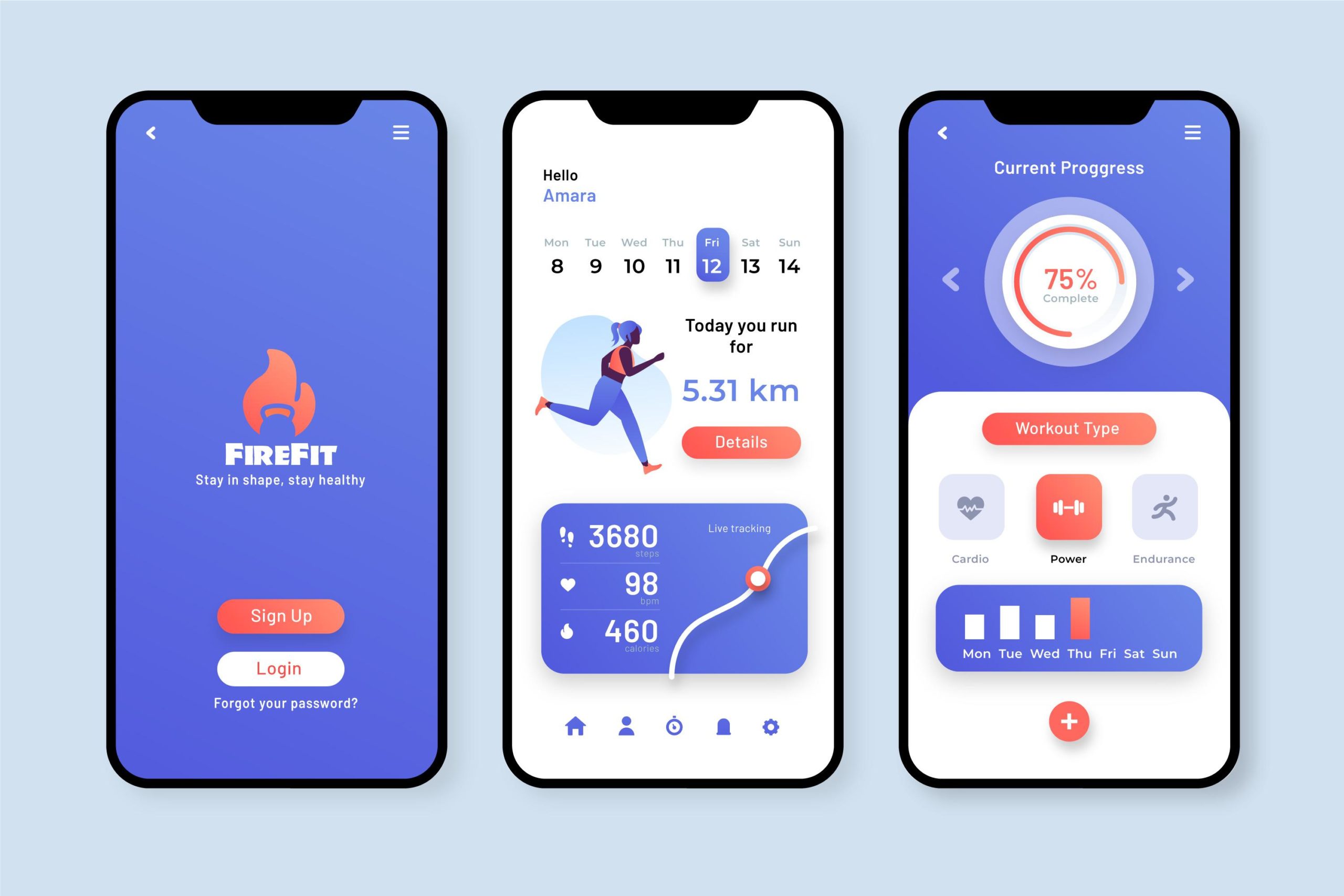How to Craft a Winning Mobile App in 2024: Comprehensive Guide
Unearthing a Problem Worth Solving:
The mobile app market is brimming with options, but success hinges on addressing a genuine need. Here’s how to identify a problem worth solving for your mobile app:
Market Research & Gap Analysis: Dive deep into current trends and existing apps. What are users missing? Are there any inadequacies or inefficiencies in how tasks are currently accomplished? Conduct surveys, focus groups, and competitor analysis to uncover unmet needs and potential opportunities.
User Frustrations: Pay attention to everyday pain points. What tasks do people find cumbersome or time-consuming? Are there recurring frustrations that your app could alleviate? Consider common complaints about existing apps in your target market.
Value Proposition: Once you’ve identified a problem, clearly define how your app solves it. What unique value will it offer users? How will it make their lives easier, more efficient, or more enjoyable? A strong value proposition is the foundation for a successful mobile app.
Building a Solid App Foundation
A well-defined roadmap and a solid foundation are crucial for building a successful mobile app. Here’s how to lay the groundwork for your app’s development:
Planning and Feature Prioritization:
Don’t try to do everything at once. Focus on creating a Minimum Viable Product (MVP) first. An MVP is a stripped-down version of your app that includes the core functionalities needed to validate your concept and gather user feedback. This allows for efficient development, reduces costs, and helps you gauge user interest before investing heavily in additional features. If you want to know about the actual cost of app development in 2024, then use an app cost estimator to determine to actual development cost.
Not all features are created equal. Identify the essential functionalities that address your target audience’s core needs. Analyze the potential impact of each feature and prioritize development accordingly. Consider user feedback, market research data, and your app’s overall goals when making these decisions.
Choosing the Right Development Path:
The next step is selecting the development approach that best suits your app’s needs and resources. Here’s a breakdown of the three main options:
Native Development: This involves building separate apps for each operating system (iOS, Android). Native apps offer the best performance, user experience, and access to device-specific features. However, they require more development time and resources.
Hybrid Development: Hybrid apps use web technologies like HTML, CSS, and JavaScript wrapped in a native app container. While they offer a faster development process and are often more cost-effective, they may have limitations in terms of performance and access to some native functionalities.
Cross-Platform Development: Cross-platform development tools allow you to create a single codebase that can be deployed to multiple platforms (iOS, Android). This approach offers faster development and lower costs compared to native development, but performance may not be quite as optimal.
The best choice for your app depends on factors like your budget, desired features, target platforms, and performance requirements. Carefully weigh the pros and cons of each approach before making a decision. As a leading app and web development company, we can help you navigate this decision and choose the right development path for your specific project.
Designing for Success: User Experience (UX) & User Interface (UI)
The user experience (UX) and user interface (UI) are the cornerstones of any successful mobile app. Here’s how to ensure your app not only looks good but also delivers a smooth and enjoyable experience for users:
Prioritizing a Seamless User Experience (UX):
Imagine your app as a journey users take to accomplish a task. Your aim is to make that journey as effortless and enjoyable as possible. Here are some key principles for a stellar UX:
Intuitive Navigation: Design a user interface that is intuitive and easy to navigate. Users should be able to find what they need quickly and understand how to interact with the app without extensive explanations.
Frictionless Flow: Strive for a smooth and frustration-free user journey. Minimize the number of steps required to complete tasks, and ensure clear instructions and feedback are provided throughout the user experience.
User Research and Testing: Conduct user research and testing throughout the design process. Gather feedback from your target audience and iterate on your design based on their insights. This helps ensure your app is user-friendly and meets their needs effectively.
Crafting a Captivating User Interface (UI):
The visual appeal of your app plays a significant role in user engagement. Here’s how to create a user interface (UI) that is both aesthetically pleasing and functional:
Clean Aesthetics: Focus on clean and uncluttered design. Avoid overwhelming users with too many elements or information. Prioritize white space and maintain a clear visual hierarchy.
Clear Visuals: Use high-quality visuals that are consistent with your brand identity. Icons and graphics should be clear and easy to understand, avoiding any confusion for users.
User-Friendly Layout: Organize the layout of your app in a way that is user-friendly. Buttons, menus, and other interactive elements should be easily accessible and positioned logically.
Brand Consistency: Maintain brand consistency throughout your app design. This includes using your brand colors, fonts, and logos in a cohesive manner. A consistent visual identity builds trust and recognition with users.
Development and Launch: Bringing Your App to Life
Now that you have a solid foundation and captivating design, it’s time to translate your vision into reality. Here’s how to navigate the development and launch process:
Selecting the Right Development Team:
The success of your app hinges on a skilled development team. Here’s how to choose the right partner for your project:
Development Options: Consider your options – in-house development, outsourcing, or a hybrid approach. In-house development offers greater control but may require significant resource investment. Outsourcing can be more cost-effective but necessitates clear communication and collaboration. A hybrid approach allows you to leverage internal expertise while outsourcing specific tasks.
Evaluating Development Teams: Carefully evaluate potential development teams. Assess their technical expertise, experience with similar projects, and their communication style. Look for a team with a proven track record of building successful mobile apps and a strong understanding of your target platform(s). Open communication and a collaborative approach are key to a smooth development process.
Testing and Refinement: Ensure a Flawless User Experience
Testing is an ongoing process throughout the development lifecycle. Here’s how to ensure your app delivers a flawless user experience:
Thorough Testing: Conduct rigorous testing throughout the development process. This includes functionality testing, performance testing, and user acceptance testing (UAT). Identify and fix any bugs or glitches before launch.
User Feedback Integration: Don’t underestimate the power of user feedback. Gather feedback from beta testers or potential users throughout the development process. Use their insights to refine your app and ensure it meets their needs effectively. Iterate on your design and functionalities based on the feedback received.
By combining a skilled development team with a commitment to thorough testing and user feedback integration, you can create a mobile app with help from an expert mobile app development company that is not only functional but also delivers a delightful user experience. This sets the stage for a successful launch and ongoing user engagement.
Marketing and Growth: Reaching Your Target Audience
Your app is built, tested, and ready to launch – but the journey doesn’t end there. To achieve success, you need a robust marketing strategy to reach your target audience and drive user acquisition. Here’s how to get your app noticed and downloaded:
Crafting a Compelling App Store Listing:
The app store listing is your app’s first impression, so make it count! Here’s how to optimize your listing for discoverability and encourage downloads:
Keyword Optimization: Conduct keyword research and strategically integrate relevant keywords into your app title, description, and keywords section. This helps users find your app when searching for solutions to their problems.
Captivating Visuals: High-quality screenshots and app icons are essential. Use visuals that showcase your app’s functionality and user interface in an attractive and engaging way.
Highlighting Your USP: Clearly communicate your app’s unique selling proposition (USP) in your app store listing. What sets your app apart from the competition? Focus on the value proposition and the benefits users will gain by downloading your app.
Implementing Effective User Acquisition Strategies:
Now that your app store listing is optimized, it’s time to implement broader user acquisition strategies. Here are some effective approaches:
Social Media Marketing: Leverage social media platforms like Facebook, Instagram, and Twitter to generate buzz about your app. Share engaging content, run targeted ad campaigns, and interact with potential users to build excitement.
Influencer Partnerships: Consider partnering with relevant influencers in your target market. Influencers can promote your app to their audience, increasing brand awareness and driving downloads.
App Review Platforms: Don’t underestimate the power of app review platforms. Encourage users to leave positive reviews and ratings, which can significantly impact your app’s visibility and credibility in the app store.
Paid Advertising: Paid advertising on social media platforms, search engines, or within app stores can be a powerful tool for targeted user acquisition. Carefully define your target audience and tailor your ad campaigns to reach them effectively.
By implementing a combination of these strategies, you can attract your target audience, drive downloads, and propel your mobile app towards long-term success. Remember, ongoing user engagement is crucial. Continuously monitor user behavior, gather feedback, and refine your app to keep users satisfied and coming back for more.




